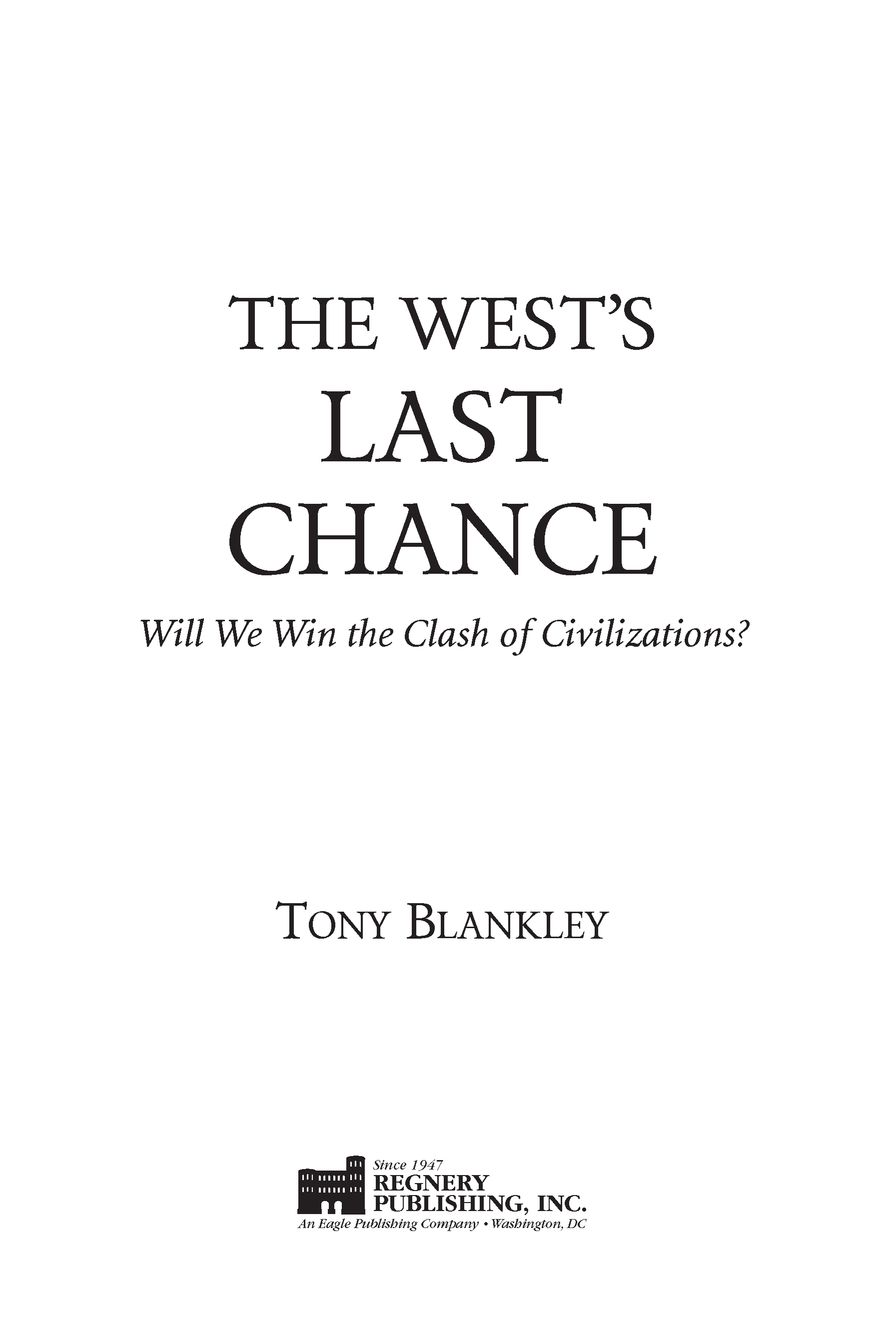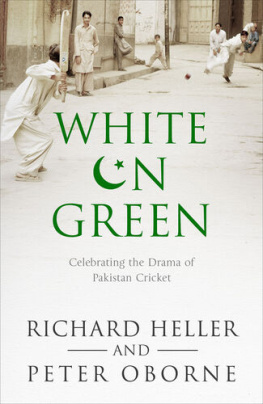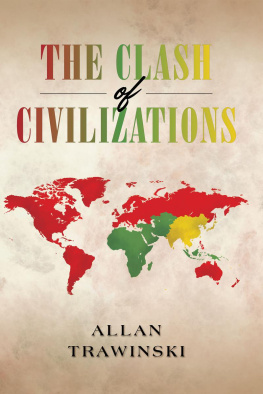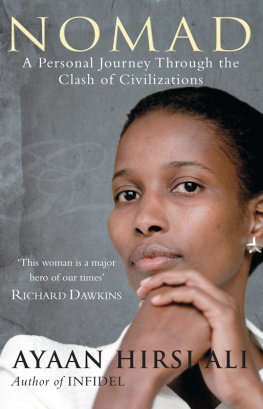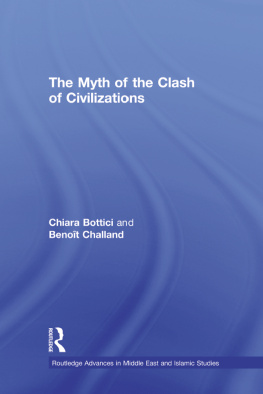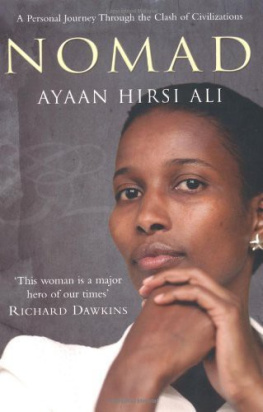Table of Contents
To my parents, Jack and Trixie Blankley,
who were Londoners during World War II,
saw Europe threatened, redeemed to freedom,
and now in the twilight of their years, again threatened.
May their grandchildren live to see the second redemption.
Just as this book was going to press, London was attackedpresumably by Islamist terrorists. With trains and a bus blown up and scores of casualties, the newspapers are filled with the proud, defiant words of Londoners and British government officials. We can only hope those words are followed by actions. But if the complacent mentalities described in this book, which have followed previous such attacks, reemerge, I fear graver, more ferocious terrorist assaults will come before the West takes decisive action.
CHAPTER ONE
The Nightmare Scenario
London, England
March 15, 2007
ON A DREARY SPRING DAY IN LONDON, preaching outside a Finsbury Park mosque to a crowd that numbered no more than a few dozen, a Moroccan cleric called for the British government to end the public display of sacrilegious art. The initial target of his campaign was the aluminum statue of a nude Eros atop the bronze fountain at Piccadilly Circus.
He could easily have picked any of dozens of statues on the streets or parks of London. But his choice of Piccadilly Circus was shrewd. Five traffic arteries intersect at the roundabout in central London and could be easily disrupted by street protesters. Nearby Underground stations gave protesters easy means to converge on or disperse from the targeted site. In Hyde Park or a quiet square, the protesters would scarcely be noticed. But at Piccadilly they would be highly visible, and their potential for creating mayhem could escalate the protests to a new level of disruption.
The cleric liked to think of this as scalability. His plan was to see the protests rise first in England, and then across Europe, where the growing Muslim ummah (the people of Islam) was forced to live under the most impure conditions.
Piccadilly Circus was the logical starting place for his jihad to cover up offensive art. The fountain had become world-famous during the 1960s, ranking alongside Carnaby Street as one of swinging Londons defining landmarks. It had become a must-see destination for millions of tourists annually. It epitomized the decadence Islamists so detested in the societies they had chosen to inhabit.
At first, the authorities tolerated the protests. The Metropolitan Police confined their vigilance to cordoning off the sidewalks and keeping the protesters from disrupting traffic. But as the cleric had foreseen, the protests caused rubbernecking motorists to slow down, jamming traffic flows throughout the West End. The media coverage was global. For weeks editorialists wrote angrily on the topic in newspapers, while television talk shows were inflamed with the pros and cons of whether liberal democracies should allow the display of artwork that offends religious sensibilities.
The authorities tried to minimize the disruption by limiting permits for the protests to off-peak traffic hours. But the cleric simply called on observant Muslims to disregard the new restrictions and congregate during rush hour. This civil disobedience gave pundits another twist on the debate and breathed new life into the editorials and talk shows.
There was another debate under way, parallel in many respects to the media debate but unknown to most. This debate raged in Arabic-language Internet chat rooms, on websites, at Friday prayer sessions in mosques, and wherever two or more Muslim men gathered in Europe for tea and cigarettes.
The parallel discussion focused more on the tactics used by the Piccadilly protesters than on the legitimacy of their goals. While many Muslims were deeply troubled by the actions of the radicals, their voices did not dominate. In fact, their voices were largely absent, especially after the mysterious killing of a prominent Muslim lecturer at the London School of Economics.
The lecturer was known as an advocate of restraint. Worried about adding to the growing tensions, the Metropolitan Police kept news of the killing to a minimum by simply making one brief announcement that an academic had been found dead in his flat. No details were provided. There was no mention in the British press of the slit throat or that the victim was a Muslim.
But rumors swept through the Arabic-language websites. In that parallel debate, restraint for its own sake was no longer a topic of advocacy. The only question raised was whether the nonviolent protests would be sufficient to rid European society of its addiction to vice.
But the parallel debate was largely ignored in the media. Some British intellectuals expressed sympathy for the protesters, arguing that a culturally tolerant society could not allow forms of expression that were abominable to Muslims or other significant minority groups. These arguments were fiercely countered by the countrys cultural and artistic elites, who warned that any restriction of publicly funded art on religious grounds would inevitably lead to unadulterated censorship.
Public sympathy swung against the Muslim protesters when they became violent. The first riot broke out when a protester recognized a curator from the Tate Modern and called for her car to be blocked. The curator had briefly achieved media notoriety in Britains tabloids for her involvement in a major retrospective of biomorphism. The exhibit, which featured the sexual content of the movements artwork, had outraged many conservative Britons.
Although some say the curator had been covertly targeted by the Islamic extremistswho knew her route home, had photographed her car, and had given the photo to the protest organizerswhat happened next might have been spontaneous. A crowd gathered around the car and began rocking it violently before breaking the windows and dragging the woman and her husband into the street, where they found themselves surrounded and unable to escape. When another motorist tried to drive into the crowd to aid the frightened couple, several protesters were knocked down. A full-scale riot broke out. Motorists stuck in the snarled traffic around Piccadilly were dragged from their cars and badly beaten. Cars were set ablaze, and the Metropolitan Police needed large numbers of reinforcements before the demonstrators could be brought under control.
As the cleric had hoped, the incident was the perfect catalyst. Islamic supporters who had previously confined themselves to Internet ranting or coffee-shop chatter swung into action.
In Italy, a small bomb planted at night destroyed Little David, the copy of Michelangelos masterpiece that stands in a public square in Florence. A communication from the bomber taking credit for the attack cited the statue as doubly offensive to Muslim standards, for it was not only a statue, but a nude one, and was therefore in violation of Muslim prohibitions against nudity. In Rome, a man tried unsuccessfully to bomb Antonio Canovas nude marble of Pauline Bonaparte as Venus in the Borghese Gallery. While pundits smugly opined that perhaps the Florentine bomber was unaware that the real David was safely confined inside the Gallerie dellAccademia, the incidents nonetheless caused authorities to reassess the vulnerability of museums and publicly displayed artwork to attack or vandalism. Across the country, museums were shut down pending security reviews. Most metropolitan museums, such as the Uffizi in Florence, were able to reopen within days; precautions against domestic terrorist groups like the Red Brigades had been in place long before Islamic terrorism reached Europe. But in smaller towns, many provincial museums were unable to reopen for months until they could extensively upgrade their security.


